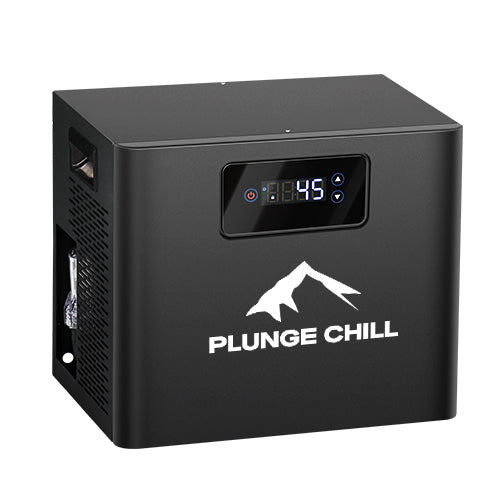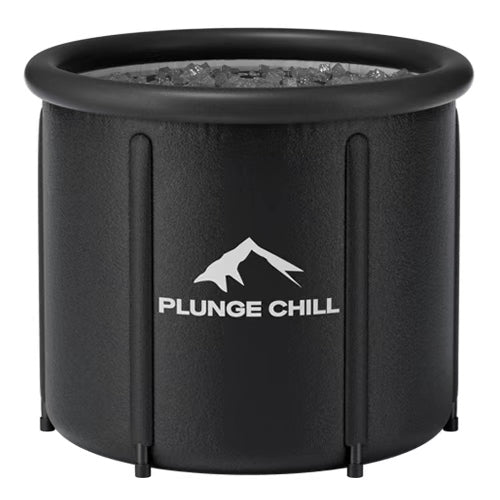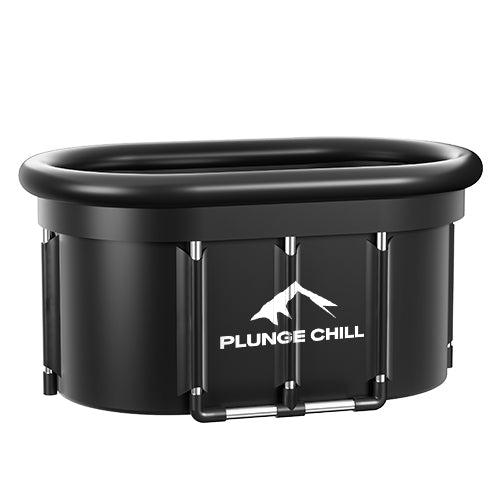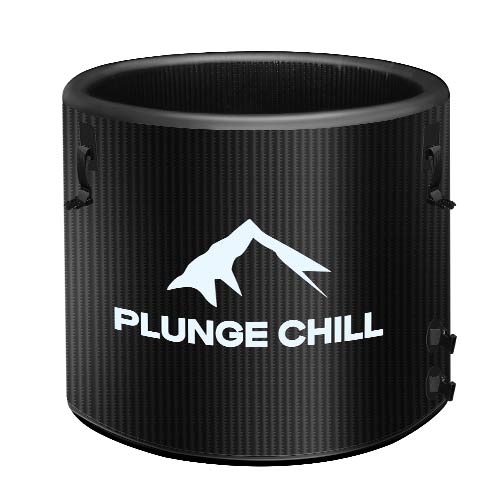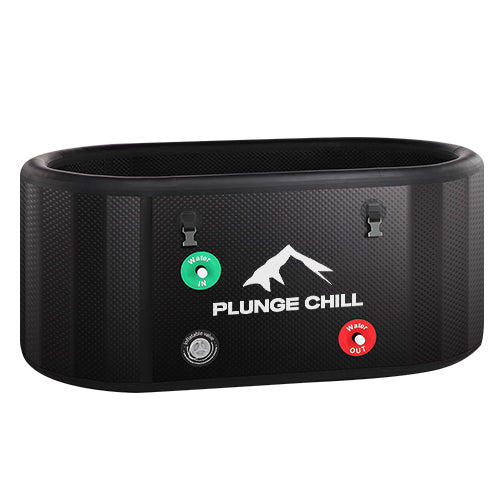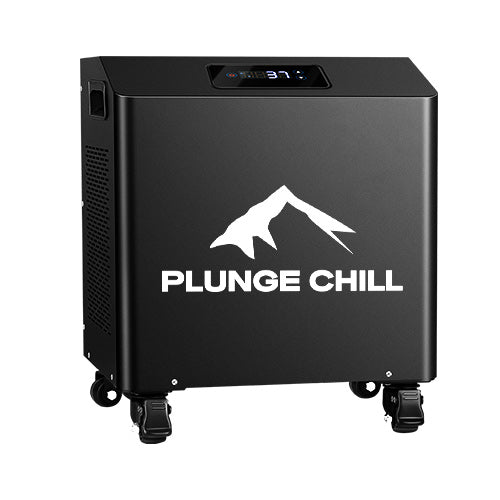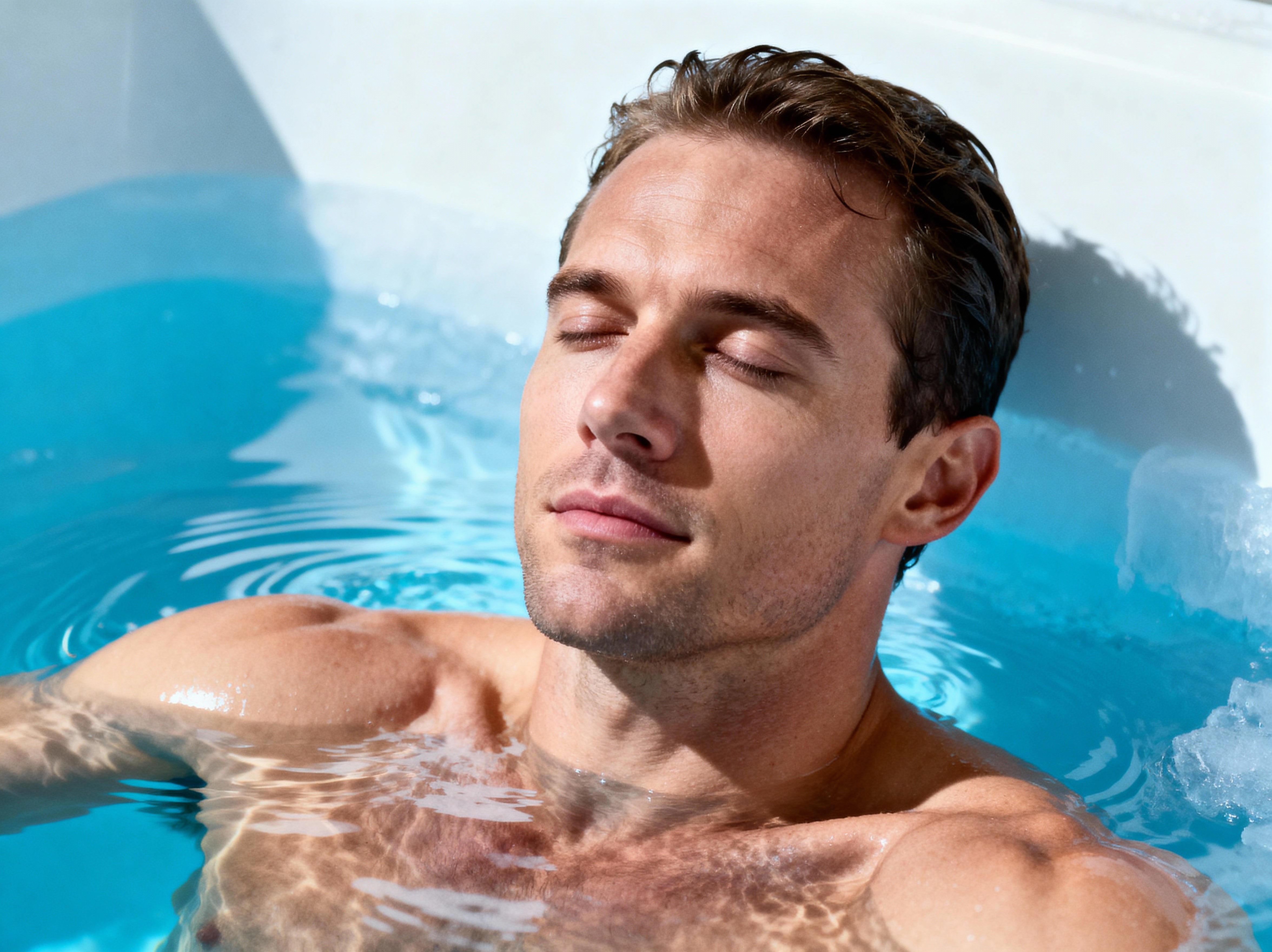As a sports rehabilitation specialist and strength coach who also reviews cold plunge products, I see the vagus nerve and cold exposure collide daily in locker rooms and clinics. Athletes ask whether a two-minute plunge can “reset” their nervous system, improve recovery, and control inflammation. The short answer is that the vagus nerve is central to how the body restores calm and coordinates organ function, and cold can influence vagal pathways—just not as precisely as most social posts suggest. This guide separates targeted clinical stimulation from everyday practices like cold bathing, summarizes what credible research actually shows, and adds practical buying and care advice for cold plunge equipment.

The Vagus Nerve in Plain Terms
The vagus nerve is the longest cranial nerve and a major component of the parasympathetic system that supports “rest and digest.” It originates in the brainstem, splits into right and left pathways in the neck, and connects densely with the heart, lungs, liver, spleen, and the entire gastrointestinal tract. It is both sensory and motor: approximately eight to nine out of ten vagal fibers carry information from the body to the brain, and the remainder carry commands from the brain back to organs. That afferent-heavy design explains why internal bodily states—from gut stretch to inflammatory signals—strongly shape mood, vigilance, and recovery. These points are consistent across clinician-reviewed primers from Cleveland Clinic and StatPearls and are echoed by Scientific American’s overview of afferent–efferent proportions.
Functionally, the vagus acts like a reflexive “information superhighway,” coordinating heart rate, blood pressure, breathing, swallowing, and digestive secretions. Feinstein Institutes researchers describe it as an orchestra with hundreds of thousands of fibers acting in concert so that heart, lungs, and gut stay synchronized. When vagal activity is robust, people tend to disengage from fight-or-flight efficiently after stressors and return to physiological balance with steadier breathing, lower resting heart rate, and more resilient digestion.

Vagal Tone, HRV, and What to Measure
Coaches and clinicians often use heart rate variability, or HRV—the beat-to-beat variation in heart rhythms—as a noninvasive index of vagal function. Higher HRV generally indicates stronger parasympathetic influence. Cleveland Clinic notes that HRV is measurable with consumer devices, but accuracy varies: chest straps and certain ear or finger sensors outclass most wrist-based watches. A wellbeing-focused review also cautions that HRV is better viewed as an upstream mediator rather than a universal proxy for mental or physical health. Evidence is mixed across large datasets, and not everyone shows HRV increases after a given “wellness” activity, even when they feel better. That variability matters for cold exposure too; if your HRV does not jump after a plunge, it does not necessarily mean you derived no benefit.
In practice, I advise athletes to track a simple morning supine HRV with a validated chest strap, to log perceived readiness alongside HRV rather than chasing single-number changes, and to look for trends across weeks rather than day-to-day noise. This is field-tested coaching guidance, not a clinical directive; verify device accuracy by cross-checking at least one session with an ECG-grade chest strap.

The Gut–Brain Axis and Why It Matters for Mood and Recovery
The gut–brain axis is a bidirectional network linking the gut, microbiome, immune system, hormones, and the central nervous system, with the vagus nerve as a primary conduit. Feinstein Institutes researchers highlight that the gut produces short-chain fatty acids and peripheral serotonin, which shape gut motility and sensitivity and send signals “up” via vagal afferents that can promote calm. Chronic stress disturbs this rhythm, slowing digestion, heightening gut sensitivity, and altering the microbiome. Exercise helps reverse that tilt: it improves motility and fosters beneficial bacteria, again nudging the gut–vagal loop toward healthier signaling.
For athletes recovering from injuries, this is more than physiology trivia. When people stay stuck in sympathetic drive, gut symptoms like reflux or bloating often flare, sleep frays, and training quality drops. Practical nutrition that emphasizes prebiotic fibers—fruits, vegetables, and whole grains—alongside consistent aerobic activity can support vagal signaling through the gut–brain axis. These are diet and training fundamentals backed by clinical commentary from Feinstein Institutes and Cleveland Clinic.
Medical Vagus Nerve Stimulation Versus Everyday Stimulation
Implanted vagus nerve stimulation (VNS) is an FDA‑approved therapy for focal epilepsy in children and adults and for treatment‑resistant depression in adults, and it is now used to augment stroke rehabilitation for upper-limb function. Devices are typically connected to the left vagus to reduce cardiac side effects and are programmed to deliver intermittent electrical pulses. Side effects can include hoarseness, throat discomfort, cough, or breathlessness; surgical risks are uncommon but real. Noninvasive transcutaneous devices are also cleared to treat cluster headache and migraine by stimulating vagal pathways at the neck or ear. These points come from Mayo Clinic and align with broader summaries in Scientific American.
Outside the clinic, many activities increase vagal activity indirectly. Cleveland Clinic and Massachusetts General Hospital note that slow diaphragmatic breathing, meditation, massage, social connection, and even brief cold exposures can nudge the parasympathetic system. The key difference is specificity. Implanted or carefully targeted noninvasive VNS seeks to stimulate defined fibers with dose, frequency, and timing control. Everyday stimuli, including cold immersion, are nonselective—they recruit many fibers and often multiple nerves at once.
An overlooked nuance from a Feinstein Institutes preclinical study is that anti‑inflammatory benefits of targeted VNS can be achieved without reducing heart rate. This suggests that a visible heart‑rate drop is not required for vagal anti‑inflammatory signaling. That matters when people infer “no vagal effect” from a plunge because their pulse did not fall, or assume the opposite when it does. These findings were in mice; translation to humans requires trials with dosing, safety, and durability controls.

What Cold Water Actually Does to the Nervous System
Cold exposure activates robust reflexes. Face immersion in cold water taps the mammalian diving response, which can slow heart rate and shift breathing. Cold showers and full-body immersion add a strong sympathetic jolt and rapid skin vasoconstriction. Northwell Health cautions that cold immersion is nonselective nervous‑system stimulation, not a precise vagus‑only intervention, and it can trigger fight‑or‑flight at the same time as vagal reflexes. That dual activation helps explain why people report both calming afterglow and initial “cold shock” with rapid breathing.
There are also central effects to consider. UC San Diego researchers found that brief cervical VNS in a controlled lab setting blunted pain‑related brain activity and dampened autonomic arousal during a painful heat task. This is not a cold‑plunge study, but it shows that well-dosed vagal input can alter pain processing and sympathetic tone. At the same time, a study of auricular tVNS reported sharper recognition of anger but lower sensitivity to sadness, suggesting emotion‑specific tradeoffs that may not always align with goals like empathy or social attunement. The point is not that cold immersion replicates tVNS. It is that vagal modulation is complex and can prioritize particular forms of salience.
A second overlooked detail comes from Northwell Health and McGill’s Office for Science and Society. Popular “reset your vagus” routines on social media oversell specificity and consistency. Activities like humming, breathing, or cold exposure likely help through broad relaxation or stimulus interruption, but they are not fiber‑selective vagal therapies. This mismatch between claim and mechanism likely drives inconsistent outcomes across individuals, with differences owed to definitions, measurement methods, or participant samples rather than a simple “works/doesn’t work” binary.

Cold Water and Recovery: What We Know and What We Don’t
Cleveland Clinic and Massachusetts General Hospital both describe brief cold exposure as one of several ways to engage the parasympathetic system. It is reasonable to expect short‑term effects on arousal and mood, particularly when paired with slow exhalations. Yet two cautions are warranted.
First, not every person will exhibit measurable HRV increases or heart‑rate decreases after cold. The wellbeing literature notes that HRV changes can be modest, that large samples sometimes fail to show simple HRV–wellbeing links, and that individual responses vary widely. Second, mechanistic claims about cold “reducing inflammation through the vagus” should be made carefully. Feinstein Institutes work shows targeted VNS can suppress inflammatory signaling in animals and improve survival under inflammatory stress; nonselective cold immersion has not been validated as a clinical anti‑inflammatory vagus therapy.
Practical Cold Exposure for Athletes and Everyday Users
For sports settings, I start with the simplest, safest interventions. Slow nasal inhalations with longer mouth exhalations quiet sympathetic drive and are a reliable first step; Cleveland Clinic emphasizes that if you feel lightheaded you should stop and resume once you feel steady. Allied Services explicitly warns against breath‑holding because it can spike fight‑or‑flight and worsen anxiety or pain. When adding cold, I typically begin with cool water face immersion or short cool showers, then progress to colder and longer exposures only if the athlete’s breathing remains controlled and recovery markers are steady. This is field practice rather than a randomized protocol; adjust based on medical input.
A working approach many teams tolerate is to anchor breath first, keep initial exposures brief, and place sessions far enough from maximal efforts or bedtime to avoid jitter or sleep disruption. Because the research base is heterogeneous, I avoid rigid “best” temperatures and durations and instead use a progression tied to breathing quality, perceived exertion in training, and morning readiness.
Safety and Who Should Get Medical Advice First
People with unstable cardiovascular disease, serious arrhythmias, uncontrolled hypertension, or a history of cold‑triggered syncope should speak with a clinician before using cold plunges. The same advice applies to those with severe Raynaud’s phenomena, advanced peripheral neuropathy, or pregnancy, and to anyone recovering from a recent surgery where vasoconstriction or blood pressure swings may be risky. This section reflects conservative rehabilitation practice rather than specific guidance from the cited sources.
Cold Plunge Products: How to Choose and How to Care for Them
After testing and setting up many units for teams and clinics, I pay attention to how a plunge performs in daily use, not just how it looks on launch day. The priorities below come from that hands‑on work; they are practical considerations rather than medical claims.
|
Feature or Claim |
Why It Matters |
What to Look For |
Source or Basis |
Confidence and Verification |
|
Maintains target temperature during back‑to‑back use |
A continuous‑duty chiller sized for your tub volume and ambient heat load; clear temp range |
Product‑reviewer experience |
Confidence: Medium. Verify by timing recovery from 50 to 39°F in your space. |
|
|
Water clarity, hygiene, skin tolerance |
Inline micron filtration with easy access; ozone or UV integrated; compatible chemicals |
Product‑reviewer experience |
Confidence: Medium. Verify with weekly filter inspection and dip‑test strips. |
|
|
Durability, energy use, noise |
Rigid tub with insulated walls or a well‑constructed portable with fitted cover; GFCI protection |
Product‑reviewer experience |
Confidence: Medium. Verify noise with a smartphone dB app and GFCI presence on cord. |
|
|
Faster cleaning, fewer leaks |
Tool‑free unions, secure hose barb or cam‑lock fittings, low‑point drain |
Product‑reviewer experience |
Confidence: Medium. Verify with a dry‑run drain and refill. |
|
|
Footprint and portability |
Fit in real training spaces |
Dimensions that allow safe egress and a splash zone; wheels or handles if portable |
Product‑reviewer experience |
Confidence: Medium. Verify placement clearances and carry weight with two people. |
|
Usability and safety |
Simple thermostat, over‑temp protection, easy access power, optional app |
Product‑reviewer experience |
Confidence: Medium. Verify setpoint holds within a couple of degrees over two hours. |
For care, aim for predictable routines. Rinse feet before entry, skim debris after sessions, and clean or replace filters on a scheduled cadence. Use compatible sanitation—many units pair ozone or UV with low‑dose oxidizers—and confirm levels with test strips rather than guessing. Keep electrical protection intact, use a tight‑fitting cover to reduce heat gain and contamination, and plan periodic deep cleans to flush biofilm from lines. These are operational best practices learned in gyms more than they are lab prescriptions.
Pros and Cons: Cold Water for Vagal Health and Recovery
The potential upsides of cold water are straightforward. It reliably engages powerful reflexes, it can create a clear transition from high alert to focused calm when paired with slow exhalations, and many people report a sharper mood and perceived recovery afterward. Cleveland Clinic, Massachusetts General Hospital, and Cedars‑Sinai all recognize that calm‑promoting practices—including slow breathing and, for some, brief cold—support vagal function in ways that reduce stress reactivity and improve emotional regulation.
The limitations are equally important. Cold immersion is not a fiber‑selective vagal therapy. Northwell Health points out that it can simultaneously trigger sympathetic circuits, and McGill’s science communication team is blunt that “reset” claims are oversold. Scientific American and Mayo Clinic emphasize that targeted VNS produces effects unmatched by general wellness approaches and that depression results, for example, remain mixed across different trials and timelines. Inflammation is another area where claims outpace data. Feinstein Institutes researchers show that precisely dosed VNS can suppress inflammatory responses in animals and, in some settings, without changing heart rate. That does not validate cold plunges as anti‑inflammatory medicine; clinical trials are needed.
One more subtlety relates to individual differences under stress. A Nature paper in mice linked lower baseline vagal signaling with stress susceptibility and showed that VNS recruited brainstem–prefrontal circuits. Meanwhile, a study of auricular tVNS in humans improved recognition of anger and impaired recognition of sadness, irrespective of stimulus type. These results do not translate directly to cold plunges, but they underscore that vagal modulation affects salience and emotion processing in nuanced ways, not a uniform “calm everything” effect.

A Brief Comparison of Common Claims and Evidence
|
Claim |
What Credible Sources Indicate |
Relevance to Cold Bathing |
Overall Confidence |
|
Cold plunges “reset” the vagus nerve |
Everyday practices can increase vagal activity but are nonspecific; “reset” is not a clinical concept |
Expect broad arousal shifts, not fiber‑targeted therapy |
Low to Medium; Northwell Health, McGill OSS |
|
A heart‑rate drop is required for anti‑inflammatory effects |
Preclinical VNS suppressed inflammation even when heart rate did not change |
Heart‑rate changes during a plunge are not sufficient or necessary to infer inflammation effects |
Medium; Feinstein Institutes |
|
HRV always rises after calming practices |
HRV is variable and not a direct proxy for wellbeing; device accuracy varies |
Some people see no HRV change even when they feel better |
Medium; Cleveland Clinic, wellbeing review |
|
Noninvasive VNS improves pain and stress circuits |
tVNS modulates pain processing and autonomic responses; emotional effects can be specific, not uniformly positive |
Cold immersion is not tVNS; do not assume identical effects |
Medium; UC San Diego, PMC tVNS study |
|
Cold face immersion stimulates vagal reflexes |
Diving reflex is well described; brief cold can slow heart rate in some contexts |
Face immersion is a scalable starting point for novices |
Medium; clinical summaries from major hospitals |
Takeaway
Cold water is a potent stimulus that can help many people downshift after stress and feel sharper between training blocks, especially when combined with slow exhalations and sound recovery habits. It acts on vagal pathways, but not with the precision of clinical VNS. Evidence from Cleveland Clinic, Massachusetts General Hospital, Mayo Clinic, Scientific American, and the Feinstein Institutes converges on a pragmatic view: breathe first, keep claims proportional to the data, and make cold one tool among exercise, sleep, and nutrition to support the gut–brain axis and autonomic balance. When buying a plunge, prioritize chilling performance, filtration, sanitation, and safety features that hold up in daily use. Above all, personalize. Responses vary, and the best program is the one you can perform consistently, safely, and with objective and subjective measures trending in the right direction.

Frequently Asked Questions
Does a cold plunge stimulate the vagus nerve?
It can engage vagal reflexes through mechanisms like the diving response, but it also activates other nerves and sympathetic pathways. Hospitals such as Massachusetts General Hospital recognize brief cold exposure as one of several practices that can promote a relaxation response, while Northwell Health emphasizes that cold is a nonselective stimulus. Think of cold as a broad nudge to the autonomic system rather than a precise vagus‑only intervention.
How should I breathe during a cold plunge?
Use slow nasal inhalations with longer, controlled exhalations through the mouth. Cleveland Clinic notes that breathing practices can raise HRV and support recovery, and Allied Services recommends avoiding prolonged breath‑holds because they may escalate fight‑or‑flight responses and discomfort. If you feel lightheaded, pause and resume when you feel steady.
Can cold water reduce inflammation via the vagus nerve?
Targeted VNS can suppress inflammatory signaling in preclinical studies, and Feinstein Institutes researchers show this can occur without a heart‑rate change. Whether nonselective cold immersion produces meaningful anti‑inflammatory effects through the same pathway in humans is not established. A reasonable verification would be randomized trials measuring cytokines and clinical endpoints after standardized cold protocols.
Is HRV a reliable way to judge if my plunge “worked”?
HRV is a useful index of parasympathetic activity but is variable and device‑dependent. Cleveland Clinic recommends accurate sensors like chest straps, and wellbeing research suggests HRV is not a universal proxy for health gains. Use HRV alongside subjective recovery, sleep, and training quality rather than as a solo verdict.
Are there people who should avoid cold plunges?
Anyone with unstable cardiovascular disease, serious arrhythmias, uncontrolled hypertension, advanced neuropathy, pronounced Raynaud’s symptoms, or pregnancy should obtain medical guidance before trying cold immersion. This is conservative rehabilitation practice and not a substitute for clinical advice. A prudent verification step is a brief physician screening and a graded, supervised first exposure.
Are device‑based vagus nerve stimulators the same as cold plunges?
No. Implanted VNS has FDA approvals for epilepsy and treatment‑resistant depression and is used to augment stroke rehabilitation; noninvasive devices are cleared for migraines and cluster headache. These systems deliver controlled, fiber‑targeted stimulation and have distinct side‑effect and safety profiles, as summarized by Mayo Clinic. Cold immersion is a general stimulus without that targeting or regulatory backing for medical indications.
Author’s Field Notes
In my work with teams, the most reliable cold protocols are simple and consistent rather than extreme. Athletes who pair two to four minutes of controlled breathing with cool‑to‑cold water report steadier calm and better readiness the next morning compared with those who chase maximal cold shock. On the equipment side, the units that earn long‑term trust are not the flashiest; they are the ones that hold temperature during heavy use, filter easily, and stay quiet enough to place near training spaces without disrupting focus. These impressions guide my recommendations above, but they are not clinical claims; verify them in your setting with objective checks and a short trial period before scaling.
References
- https://research.jefferson.edu/2022-magazine/the-hearts-little-brain.html
- https://pmc.ncbi.nlm.nih.gov/articles/PMC5859128/
- https://feinstein.northwell.edu/news/insights/gut-brain-axis-vns
- https://www.ouhsc.edu/News/details/ou-researchers-explore-vagus-nerve-stimulation-for-multiple-conditions
- https://news.utdallas.edu/health-medicine/study-vagus-nerve-stimulation-shows-progress-again/
- https://health.ucsd.edu/news/press-releases/2019-02-13-stimulating-vagus-nerve-in-neck-might-help-ease-pain-associated-with-ptsd/
- http://www.ou.edu/news/articles/2025/july/ou-researchers-explore-vagus-nerve-stimulation.html
- https://www.purdue.edu/hhs/news/2022/02/purdue-psychological-sciences-researcher-ignites-understanding-of-vagus-nerves-role-in-gastroparesis-through-nihs-sparc-initiative/
- https://health.clevelandclinic.org/what-does-the-vagus-nerve-do
- https://www.cedars-sinai.org/blog/stimulating-the-vagus-nerve.html
Disclaimer
The information provided in this article is for informational and educational purposes only and is not intended as medical advice or as a substitute for professional medical advice, diagnosis, or treatment. The author is a sports rehabilitation specialist and strength coach, not a medical doctor. The views and opinions expressed in this article are those of the author and based on their professional experience and interpretation of the cited research.
Always seek the advice of your physician or other qualified health provider with any questions you may have regarding a medical condition or before starting any new health or wellness practice, including cold water immersion. Do not disregard professional medical advice or delay in seeking it because of something you have read in this article. Reliance on any information provided in this article is solely at your own risk.
